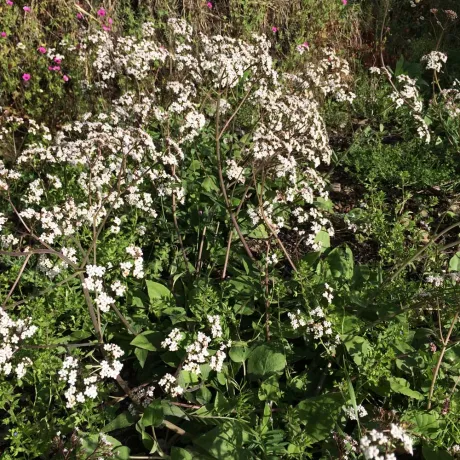Tagara has, for a long time, been a drug of choice for insomnia. It might be noted that the Asarum europeaum Linn. was earlier confused with Tagara. Its Indian variety also reported to grow in Garhwal. It has been asserted in the texts that Kushtha (S. lappa) and Tagara should not be used in the preparation of Dhuma-varti as their fumes cause Mastulunga Srava (C.S.Ci.26/181). This may provide the basis for a test for finding genuine Tagara among the possible sources of Tagara Mentioned above (Thakur Balvant Singh).
In South India, a drug by the name Granthika Tagara (Kannada) is used as Tagara in several therapeutic preparations. Although Nymphoides macrospermum Vasudevan) has been earlier identified as a source of Tagara, another source of Tagara (known as Granthika Tagara) is apparent in the Dakshina Kannada District of Karnataka. The botanical identification of this source was established as Cryptocoryne spiralis (Retz.) Fisch. Ex Wydl., family Araceae.
Note– Valeriana hardwickii Wall is also being used as Tagara (may be Pinda Tagara).
Botanical Description – It is a small perennial herb, stem many, radical leaves cordate, ovate, heart shaped, cauline leaves entire, small and few. Flowers, white or pink, clusters on top of the leaf less stem. Sepals 5, petals funnel shaped with 5 lobed, stamens 3, fruit crowned with a persistent pappus like calyx. It grows at 10,000 ft. in the Himalayan region.
Major Chemical Constituents– Hydroxyvaleranone, acctox-yvaleranone, linarin isovalerate, didrovaltratum, Valerosidatum, Valtrate, acevaltrate.
Part Used– Root
Dosage– Powder 1-3 g.
Research–
(1) Iridoid glucoside (I) showed CNS depressant activity at 31.6-100 mg/kg doses in mice (Chem. Abstr. 1971,75,77234 k).
(2) Valtrate exhibited antineoplastic activity against cells of cervical cancer, stomach cancer and lung cancer (Chem. Abstr. 1987, 107, 36671 m).




Reviews
There are no reviews yet.